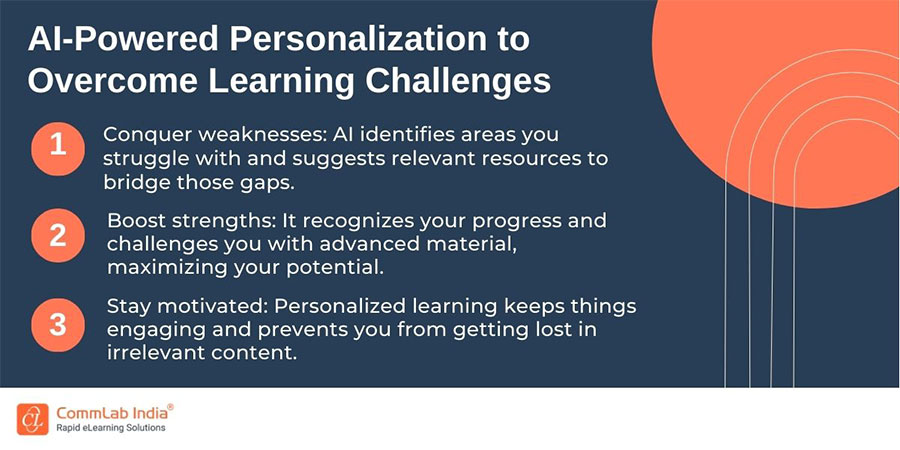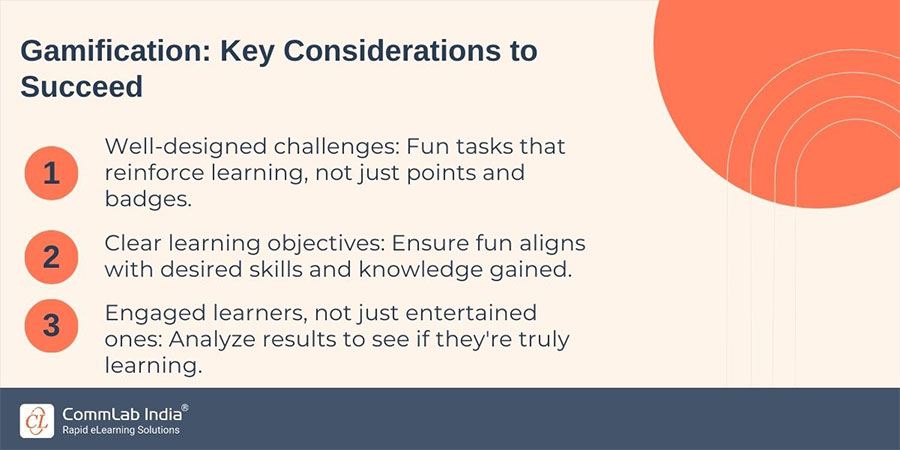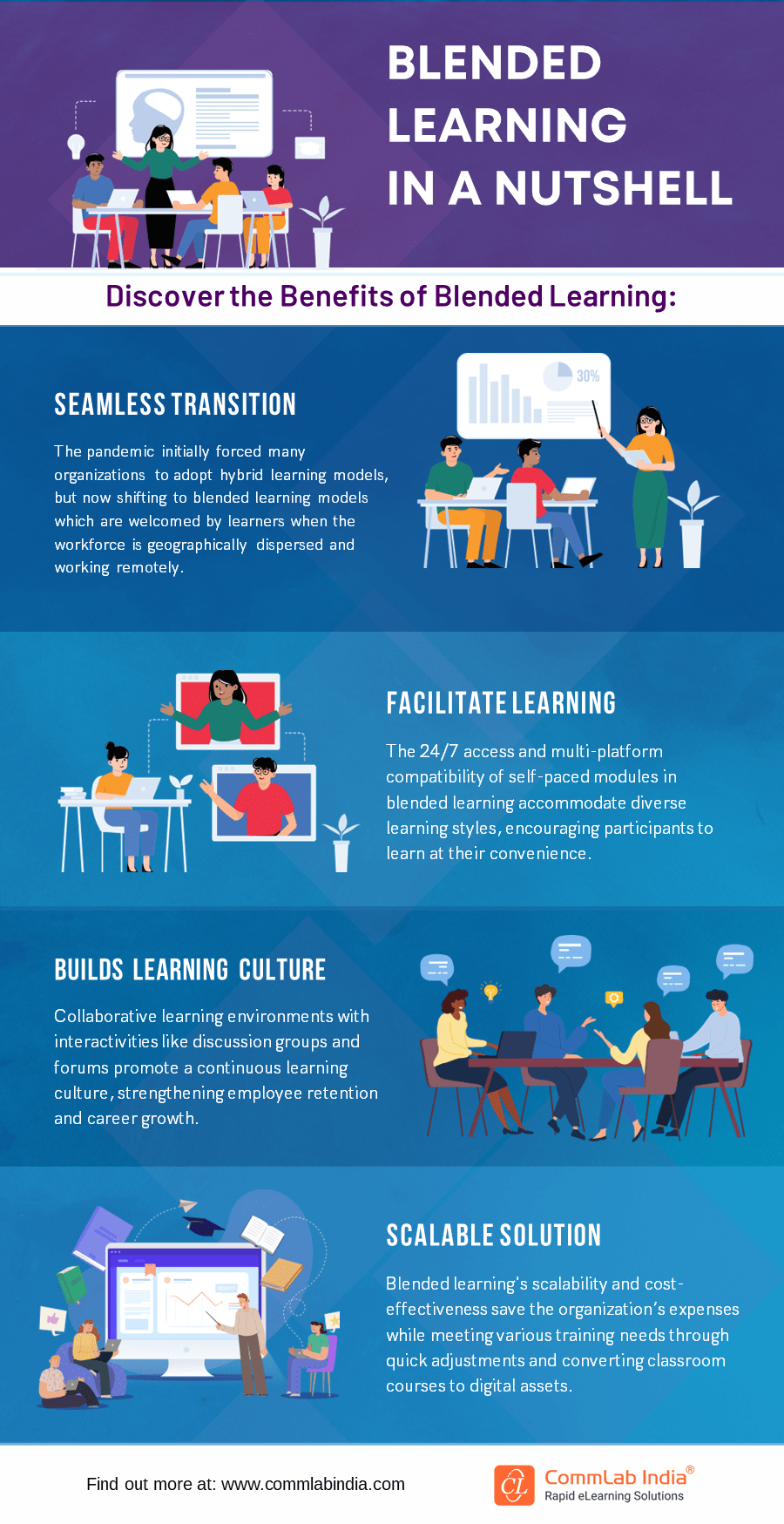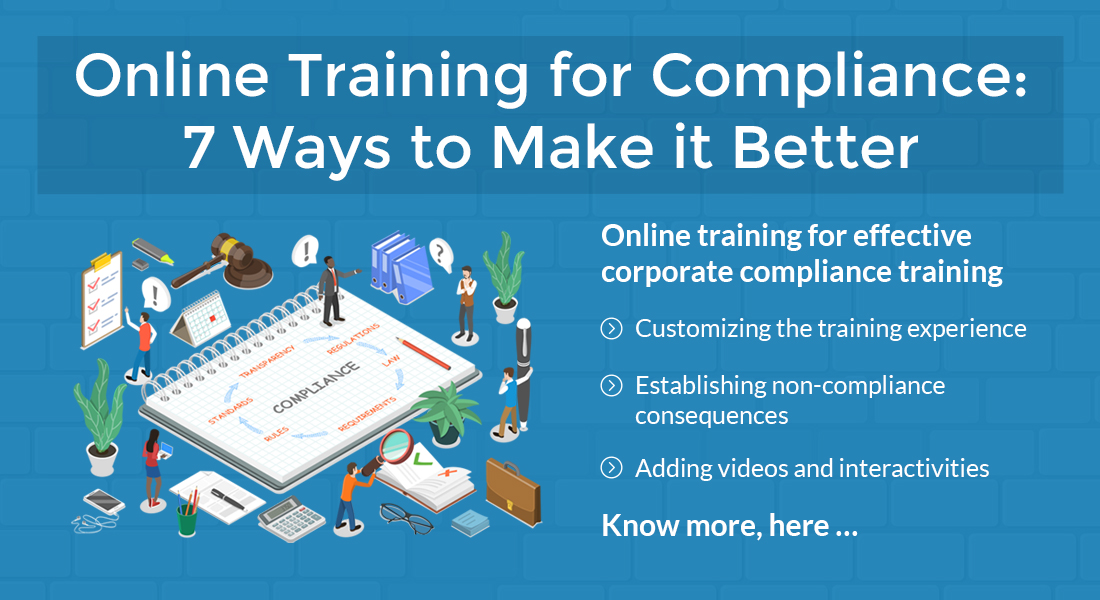Level Up! 10 eLearning Trends that Ask: Game On?

Forget dusty textbooks and endless PowerPoint slides! The world of eLearning is exploding with innovation, fueled by the ever-changing needs of learners like you and the demands of the modern knowledge economy. But with a tsunami of trends hitting the shores of eLearning, it's easy to feel overwhelmed. Which trends are actually worth your time and investment? Which are just passing fads?
Don't worry, we've got you covered! Dive into the top eLearning trends that are actually making waves in the industry. We'll explore the "how" and "why" behind each trend, and most importantly, how you can leverage them to stand out from the competition and supercharge your learning journey!
→ Download eBook: Corporate L&D Trends 2025 – Get the View from the Trenches
Table of Content
- Microlearning
- AI-powered Personalization
- Gamification
- Blended Learning
- Custom eLearning Content
- eLearning Authoring Tools and Generative AI Tools
- Responsive eLearning Courses
- Shift to 55:25:20 Model
- Augmented Reality (AR) and Virtual Reality (VR)
- Big Data Analytics
10 Trends to Watch Out in 2025
eLearning Trends to Know, Adopt, and Grow:
- Microlearning Mania for Busy Pros
- Metaverse for Immersive Learning Experience
- AI-powered Personalization for Tailored Learning Journeys
- Gamification to Make Learning a Playful Adventure
- And More!
1. Microlearning
Forget lengthy lectures and overwhelming modules. Microlearning, with its focus on delivering concise, focused learning experiences in short bursts, is taking the eLearning world by storm. These bite-sized nuggets of knowledge are ideal for busy professionals who crave flexibility and want to learn on the go. Whether it's a quick video tutorial, an interactive infographic, or a gamified quiz, microlearning caters to diverse learning styles and preferences, making it a highly engaging and efficient way to acquire new skills or refresh existing ones.
Can bite-sized knowledge nuggets truly boost your skills and career?
Yes, if done strategically! Remember that snackable learning fuels upskilling, but complex careers require full meals. Microlearning solutions deliver targeted knowledge boosts, but for mastery, deeper dives are needed. Strategically combine them to keep your skills sharp, stay updated, and accelerate in your career!
Top Reasons Why Microlearning is Effective for Corporate Training? Watch this video
2. AI-powered Personalization
No two learners are the same, and one-size-fits-all approaches to learning are becoming increasingly outdated. Artificial intelligence (AI) is transforming eLearning by providing personalized learning experiences tailored to individual needs, learning styles, and preferences. AI algorithms analyze learner data to recommend relevant content, adjust difficulty levels, and provide targeted feedback, ensuring each learner progresses at their own pace and maximizes their learning potential.
How can you leverage AI-powered personalization to overcome your learning challenges and achieve your full potential?
AI-powered learning can be your personalized learning superpower! It tailors content, adjusts difficulty, and gives targeted feedback based on your unique needs and pace.
Here's how it helps:

3. Gamification
Gamification, the use of game-like elements in non-game contexts, is injecting a dose of excitement and engagement into eLearning. Leaderboards, points, badges, and challenges motivate learners to progress, while interactive tasks and simulations provide a sense of accomplishment and reward. AI-enabled gamification takes this a step further by personalizing the learning experience, adapting challenges and rewards to individual skill levels, and providing real-time feedback for improved outcomes. Gamification not only makes learning more enjoyable but also enhances knowledge retention and application.
Gamification: Is fun and learning the ultimate winning combination?
Games can level-up learning, but fun alone won't win the trophy. Gamification adds engagement and motivation, but content quality and learner goals are key to success.
Consider:

4. Blended Learning
The future of eLearning is not about choosing between traditional classroom settings and online platforms. Instead, it's about embracing the power of blended learning, which combines the best of both worlds. This approach seamlessly integrates online learning modules with in-person workshops, discussions, and hands-on activities. Blended learning solutions offer flexibility, personalized learning experiences, and opportunities for social interaction, making it a highly effective and engaging way to acquire new skills.
How are blended learning strategies changing the corporate eLearning landscape?
Corporate eLearning is ditching the lecture halls and going multimodal! Blended learning is here, offering personalized journeys, interactive thrills, and knowledge that sticks. Imagine:
- Engagement on fire: No more snooze-worthy sessions! Games, discussions, and hands-on activities keep you hooked.
- Brains on overdrive: Visuals, audio, and real-world application? Your memory will thank you.
- Learning on the go: Online modules fit your schedule, while offline sessions deepen understanding.
- Results that matter: Real-time feedback and adaptability ensure your learning hits the mark.
Discover how blended learning bridges the gap between online and in-person learning—check out the infographic!
5. Custom eLearning Content
As learners today seek personalized and relevant learning experiences, custom eLearning content is gaining traction. Gone are the days of one-size-fits-all training programs. Instead, organizations are focusing on designing customized learning paths that cater to the specific needs and job roles of their employees. By analyzing learner data collected through digital platforms, training managers can gain insights into the skills and knowledge areas that are most crucial for their workforce. This allows for the design and development of custom eLearning that addresses the unique learning needs of individuals, resulting in a more engaging and effective learning experience. Custom eLearning solutions ensure that learners can acquire the specific skills and knowledge required to excel in their roles, leading to improved performance and productivity.
Want to transform your corporate training with custom eLearning? Here are 8 steps to create content that truly delivers results!
6. eLearning Authoring Tools and Generative AI Tools
Transform the way you create courses with eLearning authoring tools and GenAI tools. These cutting-edge tools not only save time but also enhance efficiency by automating repetitive tasks such as content creation, quiz generation, and adaptive learning path development. Leveraging AI, these tools can suggest relevant topics, tailor content for diverse learners, and even generate personalized feedback, enabling you to design impactful and inclusive learning experiences.
Generative AI takes eLearning to the next level by creating custom assets such as images, videos, and even interactive scenarios to enrich your courses. Need a professional-looking explainer video or engaging simulations? Generative AI tools can produce them quickly, reducing production time without sacrificing quality. They also help craft unique narratives and conversational AI chatbots for immersive, dynamic learning environments.
With AI and generative AI working together, eLearning designers can focus on strategy and creativity while relying on intelligent automation to handle the heavy lifting. These tools empower smarter, faster, and more engaging course development, offering learners an experience that’s both effective and enjoyable.

Corporate L&D Trends 2025
Get the View from the Trenches
- Win with AI
- Design for the agile workforce
- Unlock scale, volume, quality
- Make an impact
- Much more
7. Responsive eLearning Courses
In today’s fast-paced, technology-driven world, delivering a flexible and accessible learning experience is essential. Responsive eLearning courses are designed to adapt seamlessly to any device, providing learners with an engaging and user-friendly experience regardless of how they access their training. Whether using a desktop, tablet, or smartphone, these courses automatically adjust to fit the screen size, ensuring smooth functionality, clear visuals, and an optimal viewing experience.
With responsive eLearning, learners are no longer tied to a specific location or device. Knowledge becomes accessible anytime and anywhere, empowering employees, students, and professionals to fit learning into their busy schedules. This flexibility is especially important in today’s mobile-driven lifestyles, where constant connectivity and convenience are key.
By removing traditional barriers to learning, such as device compatibility or location constraints, responsive eLearning fosters a more inclusive and effective approach to education and training. It caters to diverse learning needs, encourages engagement, and ensures that every learner has the tools they need to succeed—no matter where or how they choose to learn.
Struggling to create eLearning courses that look great on any device? Discover the secrets to designing responsive content that keeps your learners engaged—no matter where they’re learning from!
8. Shift to 55:25:20 Model
Learning habits have undergone a major shift. The way we consume information is no longer limited to paperback formats, eBooks, or training modules. That’s right! People are acquiring information from different sources and in multiple ways which include online interaction, chats, podcasts, posts, and much more. With all these methods becoming a part of learning, training formats also need to be curated in a manner that aligns well with the learning objectives and habits of the employees and fulfills business goals at the same time.
Which learning solution is taking the lead and how the numbers have changed for experiential, social, and formal learning is what can benefit you extremely to design and develop your learning strategies.
9. Augmented Reality (AR) and Virtual Reality (VR)
AR and VR take experiential learning to a whole new level, offering immersive, engaging experiences that go beyond traditional methods. While experiential learning is a well-known concept, AR and VR elevate it with cutting-edge technology. Until recently, the high costs of developing and deploying these tools kept them out of reach for many businesses. But with advancements in technology driving down costs, more organizations are now using AR and VR to meet their training needs.
In the future, simulations and branched scenarios may be replaced with AR or VR experiences, allowing learners to gain hands-on skills and behaviors in realistic settings. This is particularly valuable for training in high-risk areas, such as complex surgical procedures or operating advanced machinery. By providing real-world, experiential scenarios, AR and VR make learning both practical and exciting. Additionally the reducing prices of headsets is making VR-based learning applications more accessible.
Discover how AR and VR are transforming corporate training—making learning more immersive, engaging, and effective! Explore the advantages as well as the challenges in the infographic.
10. Big Data Analytics
As we move into 2025, big data analytics continues to dominate across industries. With the growing availability of data and advancements in AI-driven tools, businesses are leveraging analytics to extract deeper insights, make smarter decisions, and optimize operations. From predictive modeling to personalized customer experiences, big data analytics is shaping the future of innovation and competitiveness.
Discover how big data analytics is transforming the world of eLearning! Watch now to learn more!
The Hottest Add-Ons for eLearning Success
Wearable Devices
Wearable computing refers to the integration of advanced technologies into everyday wearable devices, such as smartwatches, fitness trackers, and augmented reality glasses. These innovative devices are designed to be worn directly on the body, allowing users to interact with digital information and services seamlessly.
This emerging technology not only offers convenience and accessibility but also opens up new possibilities for experiential eLearning by providing learners with personalized and context-aware learning experiences.
For example, AR glasses can guide workers through complex tasks step-by-step, reducing errors and improving efficiency. Fitness trackers and smart devices can also monitor stress or focus levels, helping organizations tailor training to employee needs. With wearable computing, corporate training becomes more engaging, interactive, and effective, enabling employees to learn faster and retain information better—all while on the job.
Mobile Learning Apps
Empower learners with the flexibility to learn anytime, anywhere through mobile learning apps. These apps provide on-demand access to courses, videos, and other learning resources directly from a smartphone or tablet. Whether learners are commuting, traveling, or between meetings, mobile learning ensures they can easily integrate training into their busy schedules. With features like offline access, push notifications, and user-friendly navigation, these apps make it easier than ever to stay on top of personal and professional development.
The Path Ahead
As we catapult towards 2025, corporate training solutions are evolving rapidly, necessitating a proactive approach to keep businesses competitive and agile. The realm of corporate training isn't just about ticking boxes anymore. It's about staying on top of emerging trends, designing winning learning experiences and implementing AI-based learning technologies.
We've got just the winning resource you need. Our eBook is a treasure trove of actionable insights on evolving learning strategies and high-demand learning topics right at your fingertips!
Remember, knowledge is power. It's time to propel yourself into the future of corporate training. Download our eBook now!







![Role of AI in Blended Learning for Effective Corporate Training [Infographic]](https://blog.commlabindia.com/hubfs/blended-learning-ai-role-infographic.jpg)

![What is the Role of Artificial Intelligence (AI) in Online Training? [Explained]](https://blog.commlabindia.com/hubfs/Imported_Blog_Media/What-is-the-Role-of-Artificial-Intelligence-AI-in-Online-Training-Explained.jpg)